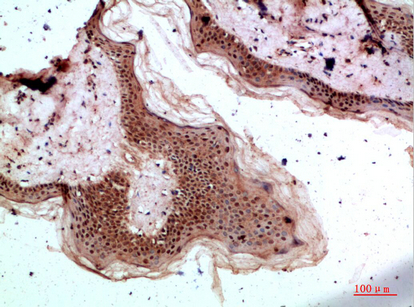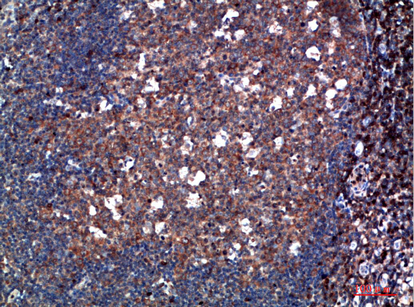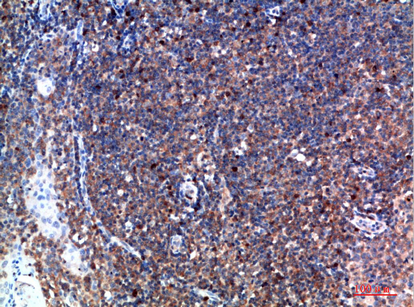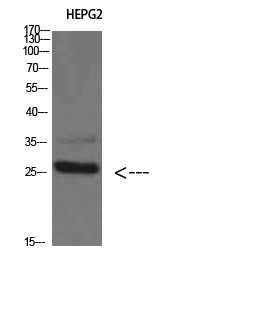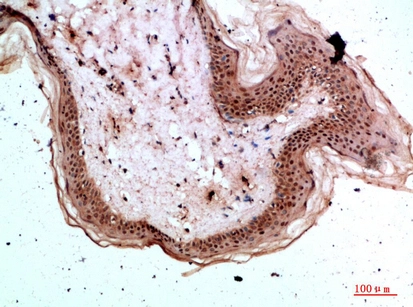
IHC-P analysis of human skin tissue using GTX34280 TPSD1 antibody. Dilution : 1:200
TPSD1 antibody
GTX34280
ApplicationsWestern Blot, ImmunoHistoChemistry, ImmunoHistoChemistry Paraffin
Product group Antibodies
TargetTPSD1
Overview
- SupplierGeneTex
- Product NameTPSD1 antibody
- Delivery Days Customer9
- Application Supplier NoteWB: 1:500-1:2000. *Optimal dilutions/concentrations should be determined by the researcher.Not tested in other applications.
- ApplicationsWestern Blot, ImmunoHistoChemistry, ImmunoHistoChemistry Paraffin
- CertificationResearch Use Only
- ClonalityPolyclonal
- Concentration1 mg/ml
- ConjugateUnconjugated
- Gene ID23430
- Target nameTPSD1
- Target descriptiontryptase delta 1
- Target synonymsMCP7-LIKE, MCP7L1, MMCP-7L, tryptase delta, delta-tryptase, hmMCP-3-like tryptase III, mMCP-7-like delta II tryptase, mMCP-7-like-1, mMCP-7-like-2, mast cell tryptase, tryptase-3
- HostRabbit
- IsotypeIgG
- Protein IDQ9BZJ3
- Protein NameTryptase delta
- Scientific DescriptionTryptases comprise a family of trypsin-like serine proteases, the peptidase family S1. Tryptases are enzymatically active only as heparin-stabilized tetramers, and they are resistant to all known endogenous proteinase inhibitors. Several tryptase genes are clustered on chromosome 16p13.3. These genes are characterized by several distinct features. They have a highly conserved 3 UTR and contain tandem repeat sequences at the 5 flank and 3 UTR which are thought to play a role in regulation of the mRNA stability. Although this gene may be an exception, most of the tryptase genes have an intron immediately upstream of the initiator Met codon, which separates the site of transcription initiation from protein coding sequence. This feature is characteristic of tryptases but is unusual in other genes. Tryptases have been implicated as mediators in the pathogenesis of asthma and other allergic and inflammatory disorders. This gene was once considered to be a pseudogene, although it is now believed to be a functional gene that encodes a protein. [provided by RefSeq, Jul 2008]
- Storage Instruction-20°C or -80°C,2°C to 8°C
- UNSPSC12352203

